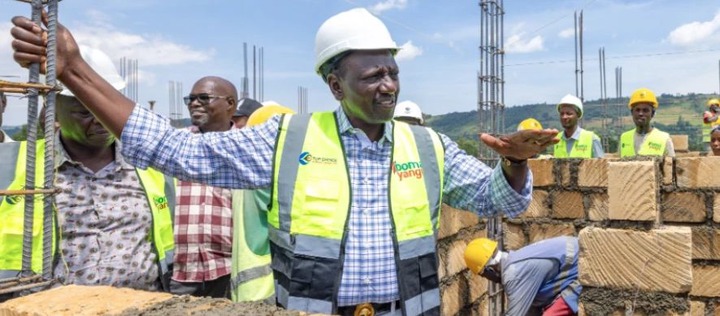President William Ruto’s ambitious affordable housing projects have sparked mixed reactions across Kenya, with many citizens uncertain about their prospects of owning homes through the scheme.
While construction of high-rise buildings is underway in some areas, progress in others has been slow. Some projects are behind schedule, and many Kenyans are uncertain about whether they will benefit from the scheme.
In Kisumu County, the Lumumba housing project is moving forward, with 2,348 units being built. However, in Nyamira County, the Sironga project has yet to break ground, despite being announced over a year ago.
In the South Rift, several projects have faced delays. In Kericho County, the Majengo Tallai development has not met its deadlines. Gilbert Kitiyo, the County Commissioner, voiced concerns over the slow pace and urged contractors to speed up work to meet the target of 324 units by 2026.
In Bomet County, some people, like lawyer Ben Siele, are hopeful that their investments will pay off. However, others, like Jane Langat, argue that the high cost of homes makes it difficult for many to participate. Residents have also raised concerns over difficulties accessing the housing registration portal and transparency issues. Some fear the scheme may favor politicians’ supporters.
In Mombasa County, the demolition of colonial-era estates to make way for new housing has caused distress. About 14 estates are being cleared to build 30,000 new homes. Despite some units being completed, residents of the Buxton estate remain displaced.
In Taita Taveta County, the project has yet to start, despite promises from the President. Many locals are unsure of how they will benefit, while others, like Maria Kea, question the value of their deductions.
In Kilifi County, residents have criticized the tax model, accusing it of enabling corruption. Teacher James Katana expressed doubts about the project’s potential to help regular Kenyans, despite having already registered and contributed.
On a brighter note, in Western and Nyanza, the first phase of projects is nearing completion. The project in Migori County is almost done, while the Kakamega project is 80% complete.
The initiative has provided jobs to many workers, such as Suleiman Sifuna, who has worked on the Kakamega site for two years, ensuring stable income for his family.
As projects continue to unfold across the country, many Kenyans are waiting to see whether the plan will truly deliver on its promises.
By Creatorhub

